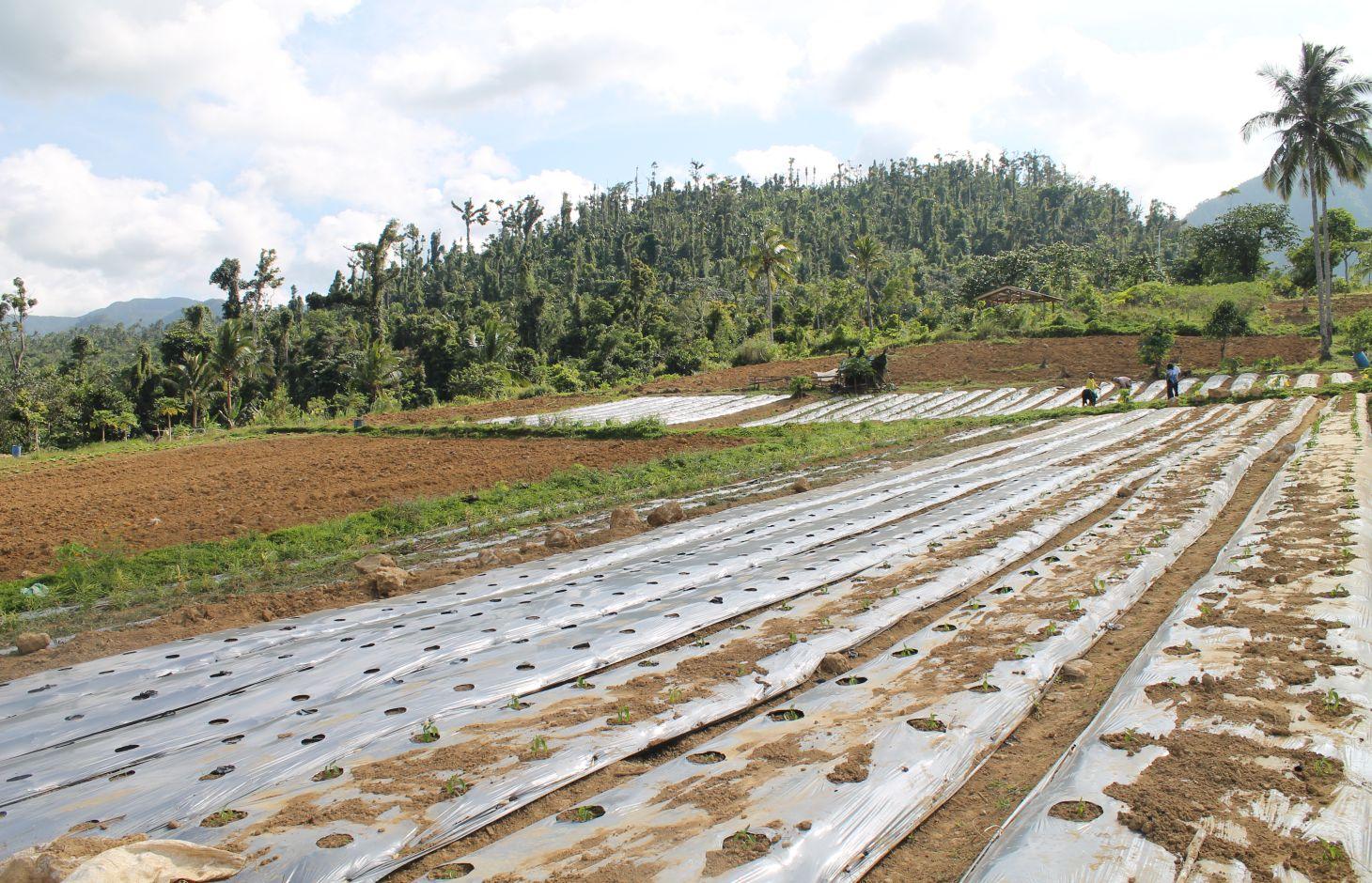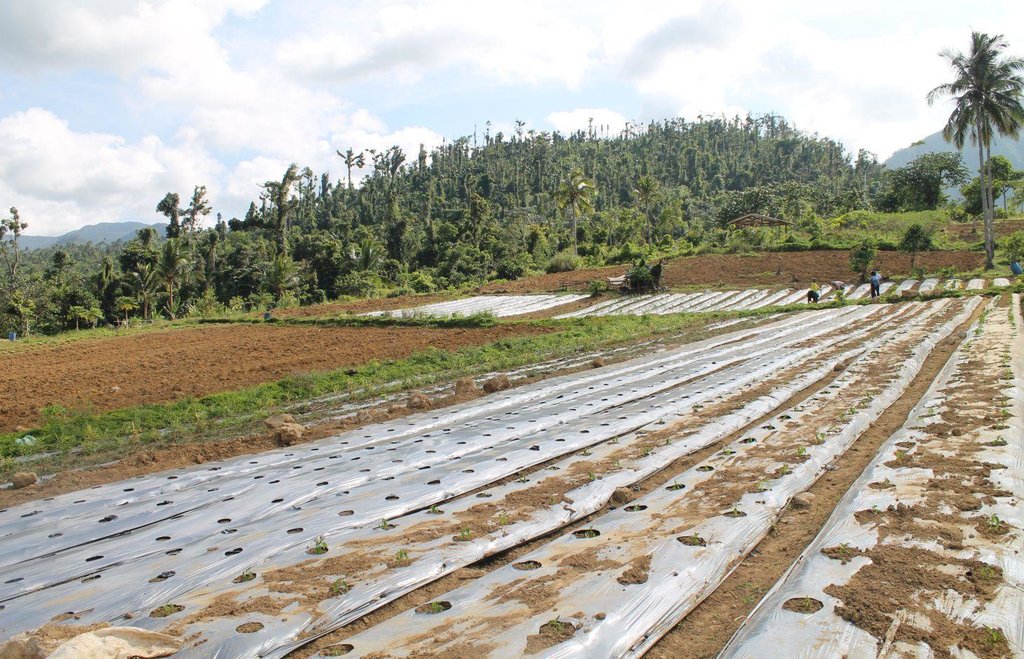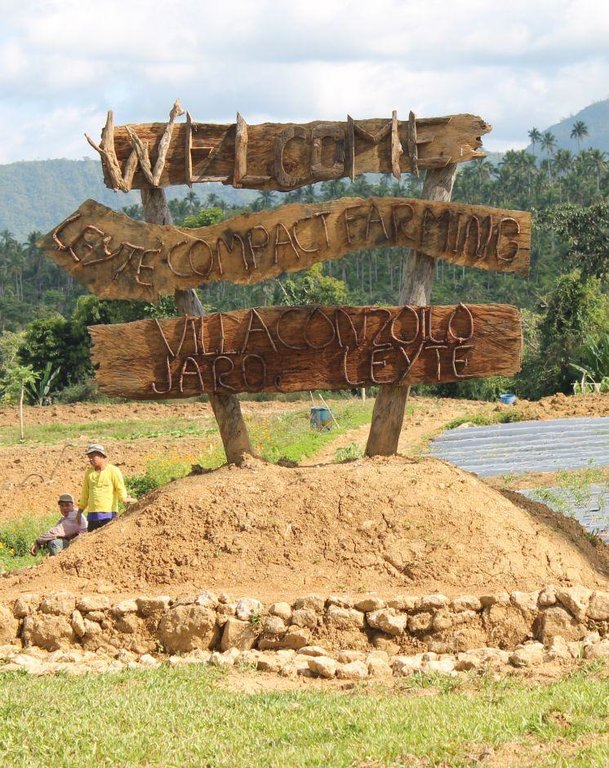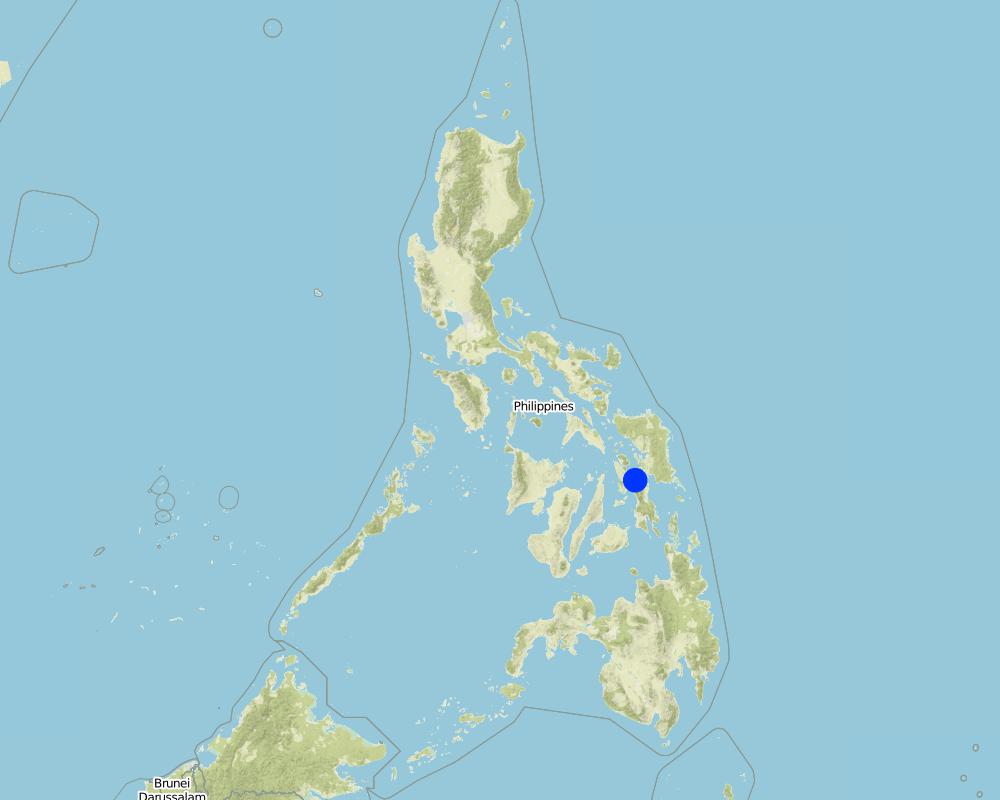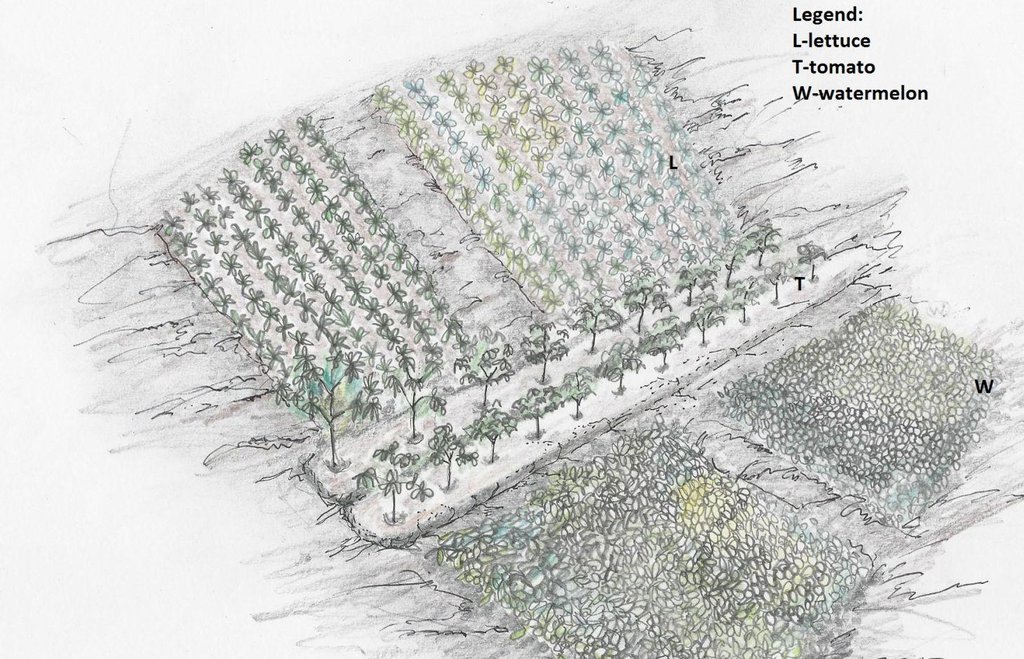Compact Farming for Vegetables Production [Philippines]
- Creation:
- Update:
- Compiler: Philippine Overview of Conservation Approaches and Technologies
- Editor: –
- Reviewers: Fabian Ottiger, Alexandra Gavilano
technologies_1300 - Philippines
View sections
Expand all Collapse all1. General information
1.2 Contact details of resource persons and institutions involved in the assessment and documentation of the Technology
Key resource person(s)
SLM specialist:
Dinamling Djolly Ma
Department of Agriculture-Bureau of Soils and Water Management
Philippines
SLM specialist:
Raquid Jemar G.
Department of Agriculture-Bureau of Soils and Water Management
Philippines
SLM specialist:
Rapis Thelma
Department of Agriculture-Region VIII
Philippines
SLM specialist:
Garcia Pastor
Visayas State University, Baybay, Leyte
Philippines
Name of the institution(s) which facilitated the documentation/ evaluation of the Technology (if relevant)
Bureau of Soils and Water Management (Bureau of Soils and Water Management) - PhilippinesName of the institution(s) which facilitated the documentation/ evaluation of the Technology (if relevant)
Visayas State University (VSU) - Philippines1.3 Conditions regarding the use of data documented through WOCAT
The compiler and key resource person(s) accept the conditions regarding the use of data documented through WOCAT:
Ja
2. Description of the SLM Technology
2.1 Short description of the Technology
Definition of the Technology:
Landusers are organized into a group or association to undertake jointly activities in the farm which include operation, input procurement, and marketing of produced crops.
2.2 Detailed description of the Technology
Description:
Compact farming in Brgy. Villaconzoilo was started by the barangay captain Mr. Alex O. Aborita wherein parcels of lands were acquired for the association to utilize. He organized the Villaconzoilo farmers’ group also known as the Compact Farming Agriculture Cooperative where he introduced new technologies to improve the farming system of the community. Farmers cultivate vegetable on a contract growing scheme. Some of the farm practices consist of growing vegetables and fruits using indigenous organic materials as soil conditioner and livestock raising. Vegetables and fruits are cultivated in divided parts but in the same area.
Purpose of the Technology: Compact farming was organized to enhance group interactions and leadership among members of the association.The aim of the landusers in growing organic vegetables is to revive and sustain soil fertility and maximize waste management practice. Marigold was also planted in between plots within the farm to prevent and control insect and pest manifestation. Landusers in the barangay were empowered through farming and conservation of the forest area. Through this technology, marketability and available markets for the produced commodities were increased. The association received numerous award in the regional and provincial level because of their demonstration of a productive and profitable farming system in the upland area.
Establishment / maintenance activities and inputs: It started in 2011 with 18 farmers investing 1000 pesos (22 dollars) each to buy initial inputs such as land, seeds and fertilizer. The area was cleared for agricultural activities. Produced are high value crops such as tomatoes, lettuce, pechay, cabbage, carrots, beans, broccoli, cucumber, and radish. These are sold not only in Jaro but also in the neighbouring municipalities and big markets in Leyte. The barangay was dubbed as the “Vegetable Basket” and the “Watermelon Queen” because of their production. Activities in the farm such as plowing, harrowing, establishment of plots, fertilizer application, transplanting, watering, spraying and harvesting are done in a rotational basis among members of the association.
Natural / human environment: Most of the farmers cultivated one parcel with size ranging from 1000-2000 square meters. Land ownership and land use right is communal. The farm production is managed by the cooperative composed of small scale land users. Members of the association are enganged in off-farm activities such as hunting and hired labor for additional income. The municipality of Jaro, Leyte has a type A modified climatic classification with an average monthly rainfall of 1000 to 1500 mm. Typhoons that usually come in October or November is very destructive to any standing crop. These factors discourage farmers to apply external inputs like fertilizer. The municipality has mostly acidic soil type with pH ranging 4.8 to 5.6.
2.3 Photos of the Technology
2.5 Country/ region/ locations where the Technology has been applied and which are covered by this assessment
Country:
Philippines
Region/ State/ Province:
Barangay Villaconzoilo
Further specification of location:
Jaro, Leyte
Comments:
Total area covered by the SLM Technology is 0.08
Map
×2.6 Date of implementation
If precise year is not known, indicate approximate date:
- less than 10 years ago (recently)
2.7 Introduction of the Technology
Specify how the Technology was introduced:
- through land users' innovation
3. Classification of the SLM Technology
3.2 Current land use type(s) where the Technology is applied

Cropland
- Annual cropping
Annual cropping - Specify crops:
- vegetables - leafy vegetables (salads, cabbage, spinach, other)
- vegetables - melon, pumpkin, squash or gourd
- vegetables - root vegetables (carrots, onions, beet, other)
- tomatoes
Specify:
Longest growing period from month to month: growing of vegetables throughout the yr.
Comments:
Major cash crop: tomato, carrot, watermelon, lettuce, broccoli
Major land use problems (compiler’s opinion): low soil fertility, nutrient imbalance
Future (final) land use (after implementation of SLM Technology): Cropland: Ca: Annual cropping
3.3 Has land use changed due to the implementation of the Technology?
Has land use changed due to the implementation of the Technology?
- Yes (Please fill out the questions below with regard to the land use before implementation of the Technology)
Land use mixed within the same land unit:
Ja
Specify mixed land use (crops/ grazing/ trees):
- Agroforestry

Cropland

Forest/ woodlands
3.4 Water supply
Comments:
Water supply: mixed rainfed - irrigated, mixed rainfed - irrigated
3.5 SLM group to which the Technology belongs
- waste management/ waste water management
- Sustain soil fertility
3.6 SLM measures comprising the Technology

agronomic measures
- A1: Vegetation/ soil cover
- A2: Organic matter/ soil fertility
Comments:
Main measures: agronomic measures
Type of agronomic measures: temporary trashlines, soil conditioners (lime, gypsum), rotations / fallows
3.7 Main types of land degradation addressed by the Technology

chemical soil deterioration
- Cn: fertility decline and reduced organic matter content (not caused by erosion)
- Ca: acidification

biological degradation
- Bc: reduction of vegetation cover
- Bl: loss of soil life
Comments:
Main type of degradation addressed: Cn: fertility decline and reduced organic matter content, Ca: acidification
Secondary types of degradation addressed: Bc: reduction of vegetation cover, Bl: loss of soil life
Main causes of degradation: soil management (improper fertilizer application), crop management (annual, perennial, tree/shrub) (disposal/utilization of weeds and crops of weeds residue)
Secondary causes of degradation: Heavy / extreme rainfall (intensity/amounts)
3.8 Prevention, reduction, or restoration of land degradation
Specify the goal of the Technology with regard to land degradation:
- reduce land degradation
Comments:
Main goals: mitigation / reduction of land degradation
4. Technical specifications, implementation activities, inputs, and costs
4.1 Technical drawing of the Technology
Technical specifications (related to technical drawing):
Tomato, watermelon and lettuce planted in the compact farm of the association.
Technical knowledge required for field staff / advisors: high
Technical knowledge required for land users: high
Main technical functions: increase in organic matter
Secondary technical functions: increase in nutrient availability (supply, recycling,…)
Temporary trashlines
Material/ species: "mani-manihan", marigold
Soil conditioners (lime, gypsum)
Material/ species: chicken dung
Author:
Mr. Patricio A. Yambot, Department of Agriculture-Bureau of Soils and Water Management
4.2 General information regarding the calculation of inputs and costs
other/ national currency (specify):
pesos
If relevant, indicate exchange rate from USD to local currency (e.g. 1 USD = 79.9 Brazilian Real): 1 USD =:
45.0
Indicate average wage cost of hired labour per day:
300.00
4.3 Establishment activities
| Activity | Timing (season) | |
|---|---|---|
| 1. | Clearing of the area |
4.4 Costs and inputs needed for establishment
| Specify input | Unit | Quantity | Costs per Unit | Total costs per input | % of costs borne by land users | |
|---|---|---|---|---|---|---|
| Labour | Clearing of the area | ha | 1.0 | 222.22 | 222.22 | 100.0 |
| Total costs for establishment of the Technology | 222.22 | |||||
| Total costs for establishment of the Technology in USD | 4.94 | |||||
4.5 Maintenance/ recurrent activities
| Activity | Timing/ frequency | |
|---|---|---|
| 1. | Plowing | |
| 2. | Harrowing | |
| 3. | Establishment of Plots | |
| 4. | Organic Fertilizer Application | |
| 5. | Transplanting | |
| 6. | Watering | |
| 7. | Spraying of botanical pesticide | |
| 8. | Harvesting |
4.6 Costs and inputs needed for maintenance/ recurrent activities (per year)
| Specify input | Unit | Quantity | Costs per Unit | Total costs per input | % of costs borne by land users | |
|---|---|---|---|---|---|---|
| Plant material | Seedlings | ha | 1.0 | 111.11 | 111.11 | 100.0 |
| Fertilizers and biocides | Fertilizer | ha | 1.0 | 55.56 | 55.56 | 100.0 |
| Total costs for maintenance of the Technology | 166.67 | |||||
| Total costs for maintenance of the Technology in USD | 3.7 | |||||
5. Natural and human environment
5.1 Climate
Annual rainfall
- < 250 mm
- 251-500 mm
- 501-750 mm
- 751-1,000 mm
- 1,001-1,500 mm
- 1,501-2,000 mm
- 2,001-3,000 mm
- 3,001-4,000 mm
- > 4,000 mm
Agro-climatic zone
- humid
Thermal climate class: tropics
5.2 Topography
Slopes on average:
- flat (0-2%)
- gentle (3-5%)
- moderate (6-10%)
- rolling (11-15%)
- hilly (16-30%)
- steep (31-60%)
- very steep (>60%)
Landforms:
- plateau/plains
- ridges
- mountain slopes
- hill slopes
- footslopes
- valley floors
Altitudinal zone:
- 0-100 m a.s.l.
- 101-500 m a.s.l.
- 501-1,000 m a.s.l.
- 1,001-1,500 m a.s.l.
- 1,501-2,000 m a.s.l.
- 2,001-2,500 m a.s.l.
- 2,501-3,000 m a.s.l.
- 3,001-4,000 m a.s.l.
- > 4,000 m a.s.l.
5.3 Soils
Soil depth on average:
- very shallow (0-20 cm)
- shallow (21-50 cm)
- moderately deep (51-80 cm)
- deep (81-120 cm)
- very deep (> 120 cm)
Soil texture (topsoil):
- medium (loamy, silty)
Topsoil organic matter:
- medium (1-3%)
If available, attach full soil description or specify the available information, e.g. soil type, soil PH/ acidity, Cation Exchange Capacity, nitrogen, salinity etc.
Soil fertility is medium
Soil drainage/infiltration is good
Soil water storage is medium
5.4 Water availability and quality
Ground water table:
5-50 m
Availability of surface water:
medium
Water quality (untreated):
good drinking water
5.5 Biodiversity
Species diversity:
- high
5.6 Characteristics of land users applying the Technology
Market orientation of production system:
- mixed (subsistence/ commercial)
- commercial/ market
Off-farm income:
- less than 10% of all income
Relative level of wealth:
- average
- rich
Individuals or groups:
- cooperative
Level of mechanization:
- manual work
- animal traction
Gender:
- women
- men
Indicate other relevant characteristics of the land users:
Land users applying the Technology are mainly common / average land users
Population density: 10-50 persons/km2
Annual population growth: < 0.5%
20% of the land users are rich and own 20% of the land.
70% of the land users are average wealthy and own 70% of the land.
10% of the land users are poor and own 10% of the land.
Market orientation is commercial/market (contract with Robinsons supermarket) and mixed (subsistence and commercial)
5.7 Average area of land used by land users applying the Technology
- < 0.5 ha
- 0.5-1 ha
- 1-2 ha
- 2-5 ha
- 5-15 ha
- 15-50 ha
- 50-100 ha
- 100-500 ha
- 500-1,000 ha
- 1,000-10,000 ha
- > 10,000 ha
Is this considered small-, medium- or large-scale (referring to local context)?
- small-scale
Comments:
Average area of land owned or leased by land users applying the Technology: < 0.5 ha, 0.5-1 ha, 1-2 ha
5.8 Land ownership, land use rights, and water use rights
Land ownership:
- communal/ village
Land use rights:
- communal (organized)
Water use rights:
- open access (unorganized)
5.9 Access to services and infrastructure
health:
- poor
- moderate
- good
education:
- poor
- moderate
- good
technical assistance:
- poor
- moderate
- good
employment (e.g. off-farm):
- poor
- moderate
- good
markets:
- poor
- moderate
- good
energy:
- poor
- moderate
- good
roads and transport:
- poor
- moderate
- good
drinking water and sanitation:
- poor
- moderate
- good
financial services:
- poor
- moderate
- good
6. Impacts and concluding statements
6.1 On-site impacts the Technology has shown
Socio-economic impacts
Production
crop production
animal production
risk of production failure
product diversity
Income and costs
expenses on agricultural inputs
farm income
diversity of income sources
workload
Socio-cultural impacts
cultural opportunities
recreational opportunities
community institutions
Improved livelihoods and human well-being
Comments/ specify:
Through the technology, the income of landusers were increased since agriculture is the main source of income for the families in the community.
Ecological impacts
Soil
soil moisture
soil cover
Biodiversity: vegetation, animals
habitat diversity
Other ecological impacts
produce unpleasant odor during decomposition processes
6.2 Off-site impacts the Technology has shown
downstream flooding
downstream siltation
damage on neighbours' fields
6.3 Exposure and sensitivity of the Technology to gradual climate change and climate-related extremes/ disasters (as perceived by land users)
Gradual climate change
Gradual climate change
| Season | increase or decrease | How does the Technology cope with it? | |
|---|---|---|---|
| annual temperature | increase | well |
Climate-related extremes (disasters)
Meteorological disasters
| How does the Technology cope with it? | |
|---|---|
| local rainstorm | not well |
6.4 Cost-benefit analysis
How do the benefits compare with the establishment costs (from land users’ perspective)?
Short-term returns:
neutral/ balanced
Long-term returns:
positive
How do the benefits compare with the maintenance/ recurrent costs (from land users' perspective)?
Short-term returns:
neutral/ balanced
Long-term returns:
positive
Comments:
The total asset of the cooperative is worth 20 million after five years of starting the technology.
6.5 Adoption of the Technology
If available, quantify (no. of households and/ or area covered):
38
Of all those who have adopted the Technology, how many did so spontaneously, i.e. without receiving any material incentives/ payments?
- 91-100%
Comments:
100% of land user families have adopted the Technology without any external material support
38 land user families have adopted the Technology without any external material support
There is a strong trend towards spontaneous adoption of the Technology
Comments on adoption trend: Most of the land users in the community are encouraged to join because of the benefits that the members could gain. Members are paid higher in terms of wages compared to non-members.
6.7 Strengths/ advantages/ opportunities of the Technology
| Strengths/ advantages/ opportunities in the land user’s view |
|---|
|
Land users of the cooperative were empowered through their knowledge in growing crops and raising livestock. Their income were increased due to the diversified high value vegetables planted within the farm. How can they be sustained / enhanced? Provision of trainings by the government for the land users in the cooperative on proper packaging of the fresh vegetables, and secondary processing of crops to increase their market value. |
| Strengths/ advantages/ opportunities in the compiler’s or other key resource person’s view |
|---|
| Strong leadership and knowledge on farming of the barangay captain Mr. Alex O. Arborito who encouraged the land users to invest and join the cooperative. |
|
The area was opened for ecological tourism and as training sites for agricultural technicians/workers, on the job training's for students from the university to experience first hand the farming system of the cooperative. How can they be sustained / enhanced? Delineate specific areas only for training grounds as not to disrupt activities in the whole farm area. |
6.8 Weaknesses/ disadvantages/ risks of the Technology and ways of overcoming them
| Weaknesses/ disadvantages/ risks in the compiler’s or other key resource person’s view | How can they be overcome? |
|---|---|
| Lack of irrigation system that could be utilize during dry season | Provision of solar pump project to ensure continuity of water supply to irrigate crops during dry season. |
7. References and links
7.1 Methods/ sources of information
Links and modules
Expand all Collapse allLinks
No links
Modules
No modules


